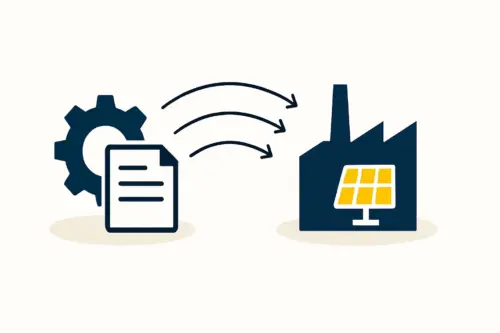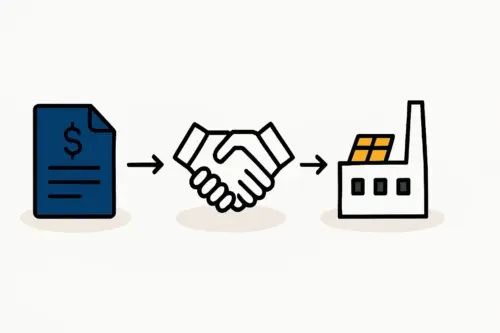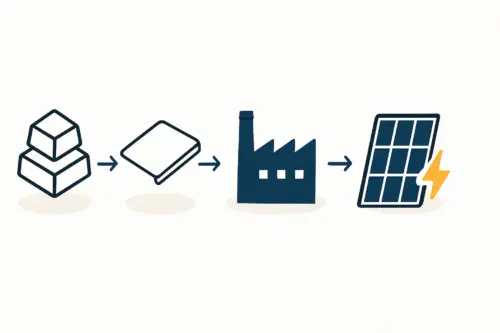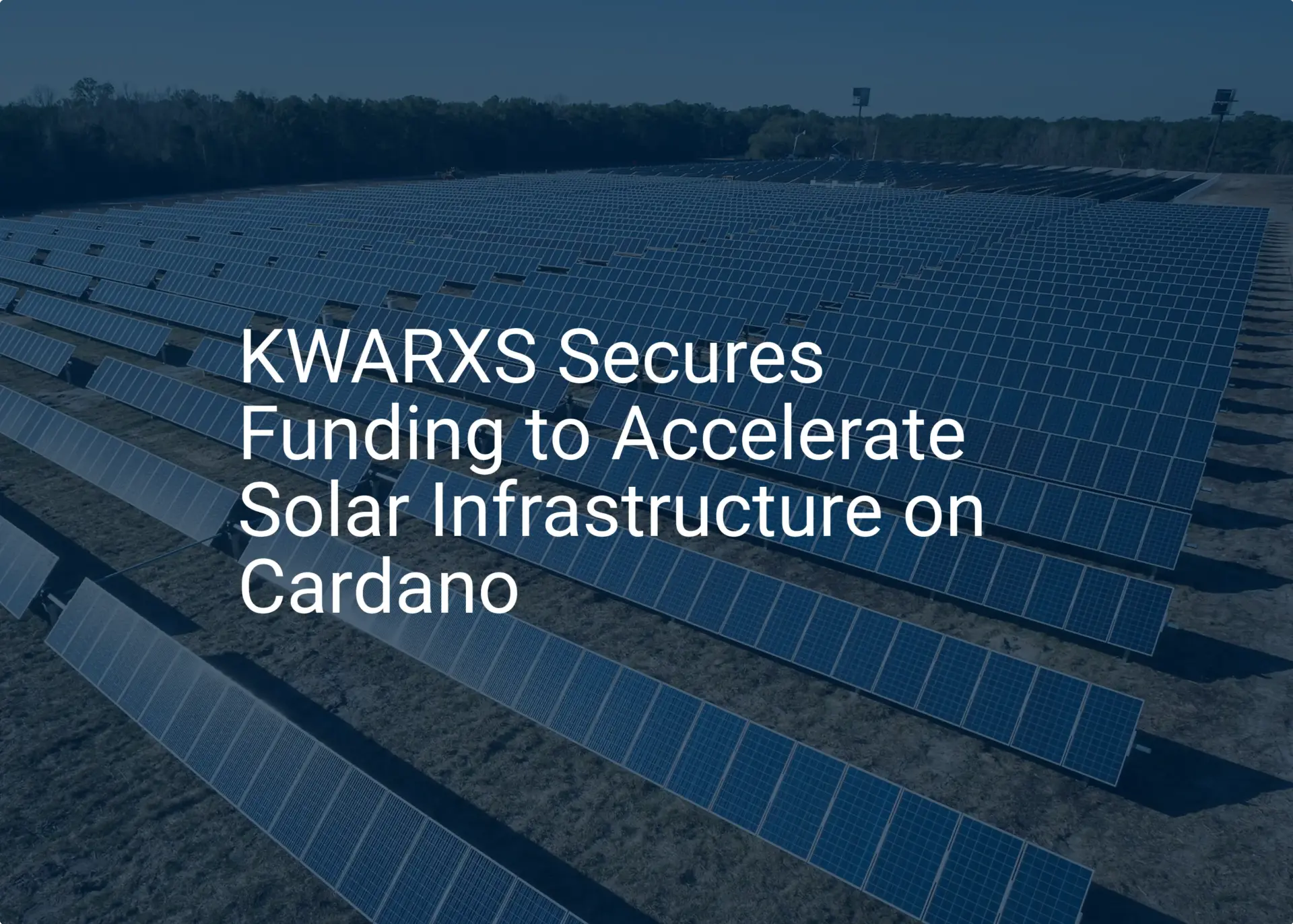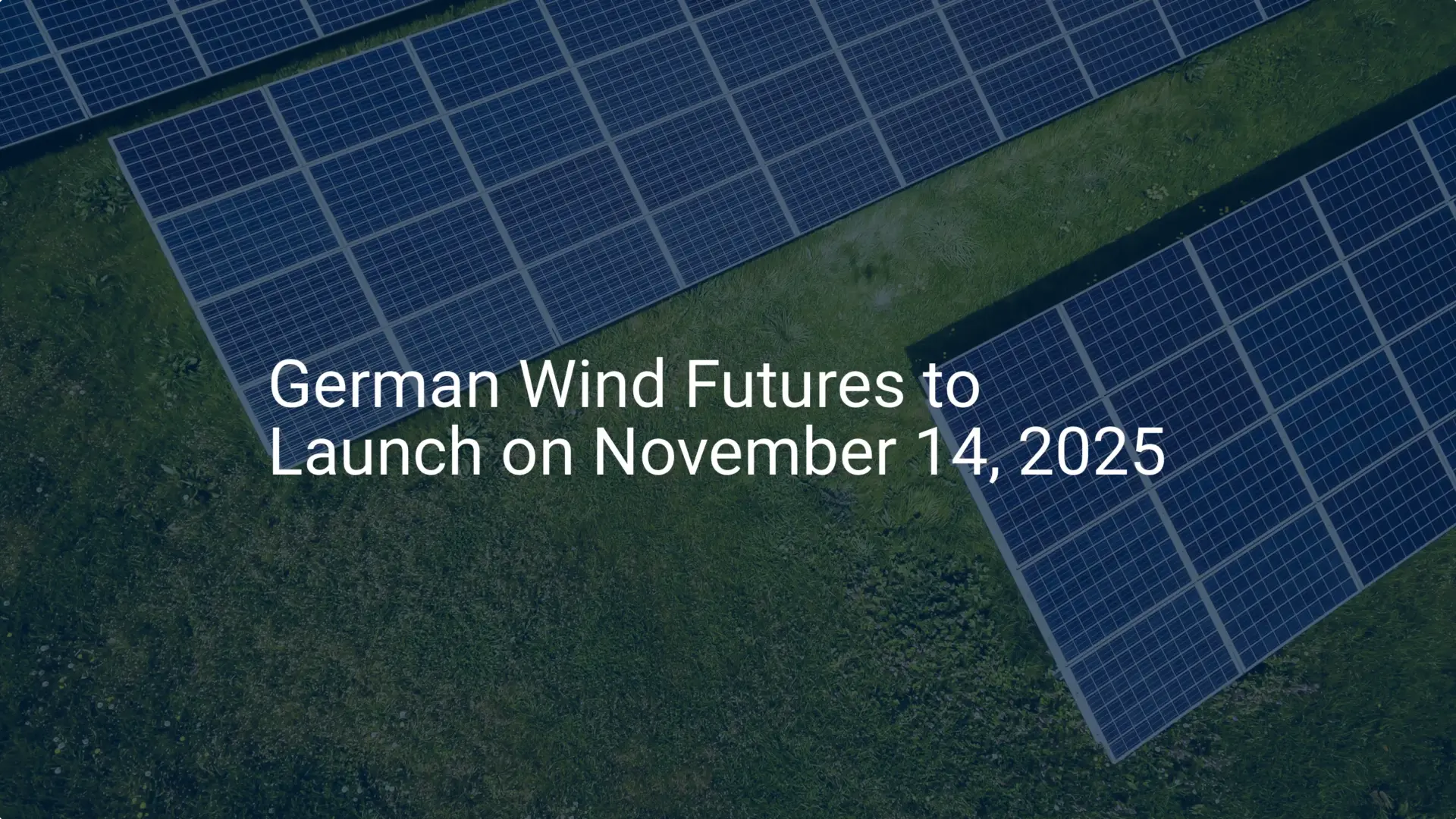For entrepreneurs looking to establish a solar module factory in Europe, Germany presents a compelling case with its engineering prowess, stable economy, and commitment to renewable energy. However, the choice of location within Germany is a critical decision, significantly impacting project timelines, costs, and overall success. The industrial landscapes of the former Eastern and Western German states offer distinct advantages and challenges.
Understanding these regional differences is not merely a geographical exercise but a fundamental strategic decision. The process of securing industrial land and navigating permitting can vary dramatically, elevating a logistical detail into a major factor in your business plan. This article provides a comparative analysis to help business leaders make a more informed location decision.
The German Industrial Landscape: Two Distinct Opportunities
The reunification of Germany in 1990 set two distinct economic regions on a path toward convergence. Yet, over three decades later, their industrial characteristics remain unique, offering different value propositions for new manufacturing ventures.
-
Western German States (e.g., Bavaria, Baden-Württemberg): These regions represent Germany’s traditional industrial heartland. They are characterized by highly developed infrastructure, dense supplier networks, and a long history of manufacturing excellence. However, this maturity also means higher operational costs, greater competition for resources, and more complex regulatory environments.
-
Eastern German States (e.g., Saxony, Thuringia, Saxony-Anhalt): Following reunification, these states underwent significant economic restructuring. This created opportunities for new industries, supported by substantial government investment in infrastructure and technology. Regions like ‘Solar Valley’ emerged, creating specialized ecosystems for renewable energy technologies.
This historical context is crucial to understanding the practical differences an investor will face today, particularly concerning the foundational steps of acquiring land and securing permits.
Land Availability and Cost: The Foundational Difference
One of the most immediate and tangible distinctions between the two regions is the availability and cost of industrial land. This factor directly influences the initial Investment Requirements for a Solar Factory.
Eastern Germany: Availability and Affordability
The Eastern states generally offer a greater supply of industrial land. Much of this land is classified as ‘brownfield,’ meaning it was previously used for industrial purposes. These sites often come with existing utility connections and are pre-zoned for industrial use, simplifying the planning process.
This higher availability translates directly into lower costs. For example, industrial land prices in key areas of Saxony might range from €30 to €60 per square meter. This cost-effectiveness allows for a larger operational footprint and frees up capital for other critical areas like machinery and R&D.

Ready to make big Profits?
The solar Industry is Booming
WE HELP NEWCOMERS to the solar industry start their own solar module production line. Customers can make BIG PROFITS by selling modules and finding investors, without wasting money and time on things they don't need!
Western Germany: Scarcity and Premium Pricing
In contrast, the densely populated and highly industrialized Western states face a scarcity of available land. Competition is fierce, not only from other industrial players but also from commercial and residential developers.
This high demand drives up prices significantly. Comparable industrial plots in states like Bavaria or Baden-Württemberg often cost between €100 and €300 per square meter, and sometimes much more in prime locations near major logistics hubs. For a new venture, this premium can place considerable strain on the initial budget.
The Permitting Process: A Tale of Two Timelines
While land cost is the primary financial variable, the permitting process is the key determinant of your project timeline. Germany is known for its thorough, rules-based bureaucracy, but the speed and complexity of this process can differ substantially between East and West.
Eastern Germany: Political Will and Streamlined Approvals
State and municipal governments in Eastern Germany are often highly motivated to attract new industrial investment to drive economic growth and create jobs. This political will often translates into a more streamlined and supportive administrative process. Key factors include:
-
Proactive Support: Economic development agencies are typically deeply involved, often acting as a single point of contact to guide investors through the necessary applications.
-
Fewer Obstacles: Lower population density means fewer public objections (often termed ‘NIMBYism’ – Not In My Back Yard), a factor that can cause significant delays elsewhere.
-
Pre-Approved Zones: Many designated industrial parks have environmental and building approvals already in place, drastically reducing the time needed to break ground.
Based on experience from J.v.G. turnkey projects, the permitting timeline in an Eastern state can often be 30-50% shorter than in a comparable Western location.
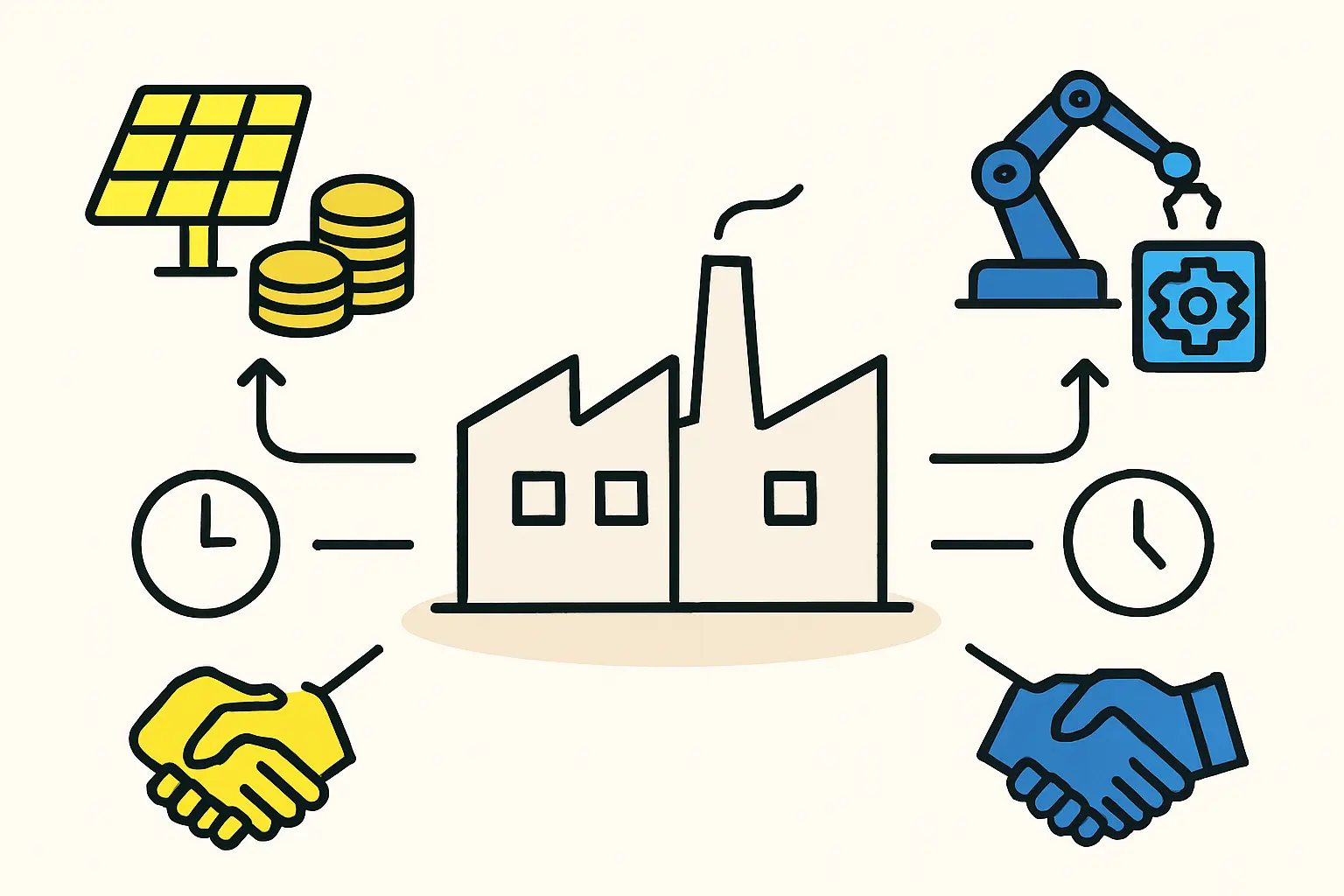
Western Germany: Complexity and Due Diligence
The permitting process in the West is no less professional, but it is often more complex and lengthy. The dense population, established communities, and stringent environmental regulations require a more rigorous due diligence process.
-
Multiple Stakeholders: A larger number of stakeholders, including local residents, environmental groups, and multiple government agencies, are often involved in the approval process.
-
Strict Regulations: Heritage protection laws, noise abatement rules, and complex environmental impact assessments add layers to the application.
-
Longer Timelines: Combined, these factors mean securing all necessary permits can take significantly longer and require more extensive legal and administrative resources. This is an important consideration when planning your How to Choose the Right Location for Your Solar Module Plant strategy.
Subsidies and Financial Incentives: Fueling Growth in the East
To encourage investment and bridge the economic gap with the West, the German federal government and Eastern states offer attractive financial incentives. The most significant of these is the ‘Gemeinschaftsaufgabe Verbesserung der regionalen Wirtschaftsstruktur’ (GRW), a program that provides grants for investments that create long-term jobs.
For a new solar factory, this program can provide non-repayable grants covering a substantial percentage of the eligible investment costs. While subsidies are available throughout Germany, the eligibility criteria are often more favorable and the funding rates higher in the Eastern states. This can be a decisive factor in the financial viability of a new enterprise.
A Comparative Summary: Making an Informed Decision
| Factor | Eastern German States | Western German States |
|---|---|---|
| Industrial Land Cost | Lower (€30-€60/sqm typical) | Higher (€100-€300+/sqm typical) |
| Land Availability | High, including pre-zoned sites | Low, high competition |
| Permitting Speed | Faster, more streamlined | Slower, more complex |
| Government Subsidies | High (e.g., GRW program) | Moderate to low |
| Infrastructure | Good and modernizing | Highly developed and dense |
| Labor Pool | Skilled industrial workforce | Highly competitive labor market |
| Industrial Ecosystem | Emerging, specialized clusters | Mature, diverse ecosystems |
Frequently Asked Questions (FAQ)
What is the typical timeline for securing a building permit?
In an Eastern German state with a supportive municipality, it is often possible to secure all necessary permits within 6-9 months. In a Western state, the same process could take 12-18 months or longer, depending on the project’s complexity and location.
Is knowledge of the German language essential for this process?
While many officials in Germany speak English, all official documentation and legal submissions must be in German. Having local partners or legal counsel proficient in German is therefore essential to navigate the administrative process effectively. This is also a key part of Navigating Factory Certifications and Standards.
Are there local agencies that can help new investors?
Yes, every German state has an economic development agency (Wirtschaftsförderung) dedicated to attracting and supporting new business investment. These agencies can be invaluable resources, providing information on available sites, funding opportunities, and administrative procedures.
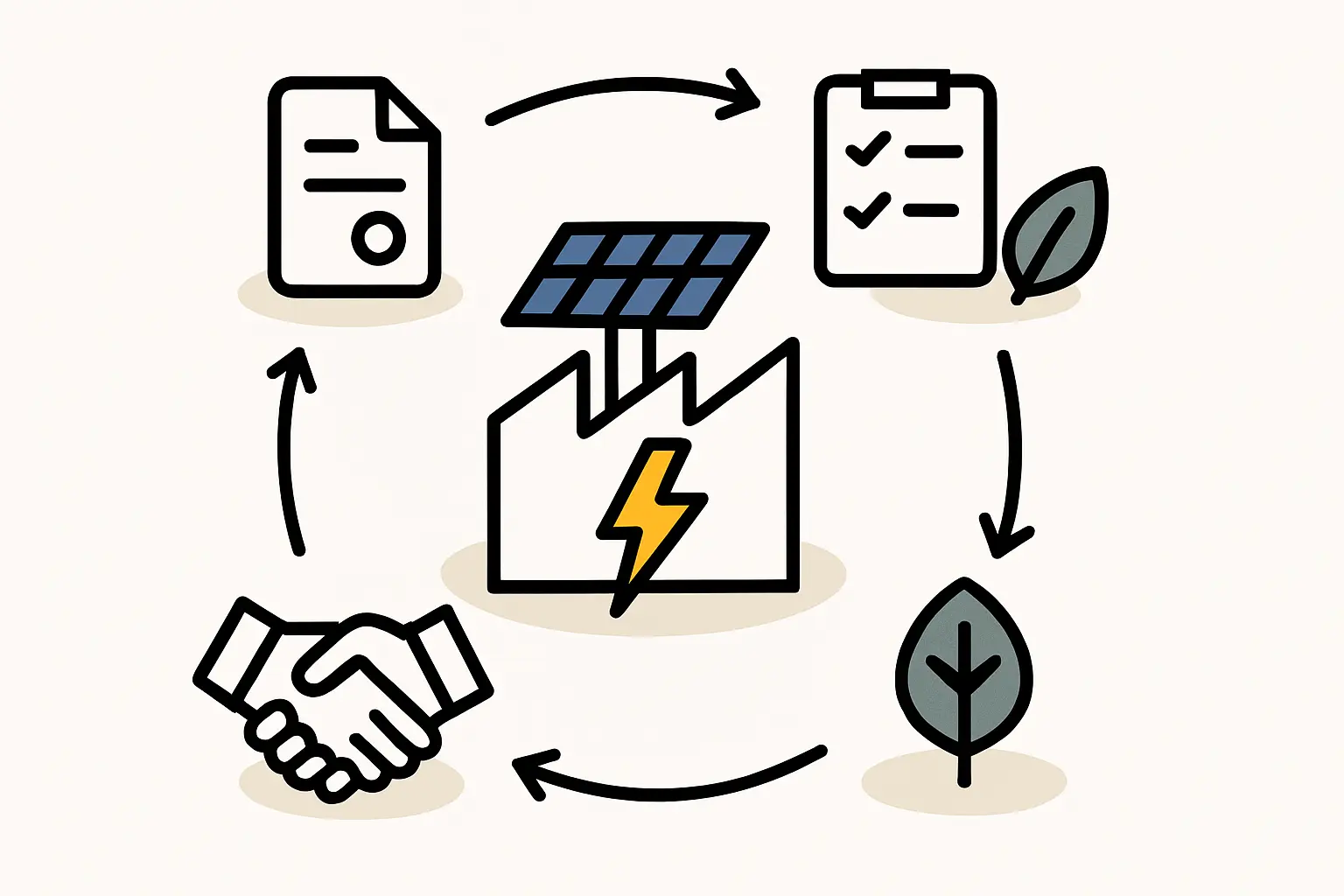
Choosing Your Path Forward
Deciding where to locate a new solar factory in Germany means choosing between two excellent but distinct propositions.
A location in the East often offers a faster path to market, lower initial capital expenditure on land, and significant financial incentives. This makes it an attractive option for new ventures looking to optimize their budget and become operational quickly.
A location in the West provides proximity to some of the world’s most sophisticated supply chains and a dense customer base. This may be preferable for established companies looking to integrate a new facility into an existing logistics network, despite the higher costs and longer timelines.
Ultimately, the right choice depends on your company’s specific priorities: speed, cost, infrastructure, or proximity to market. A thorough evaluation of these regional factors is a critical first step on the path to a successful manufacturing operation in Germany.


